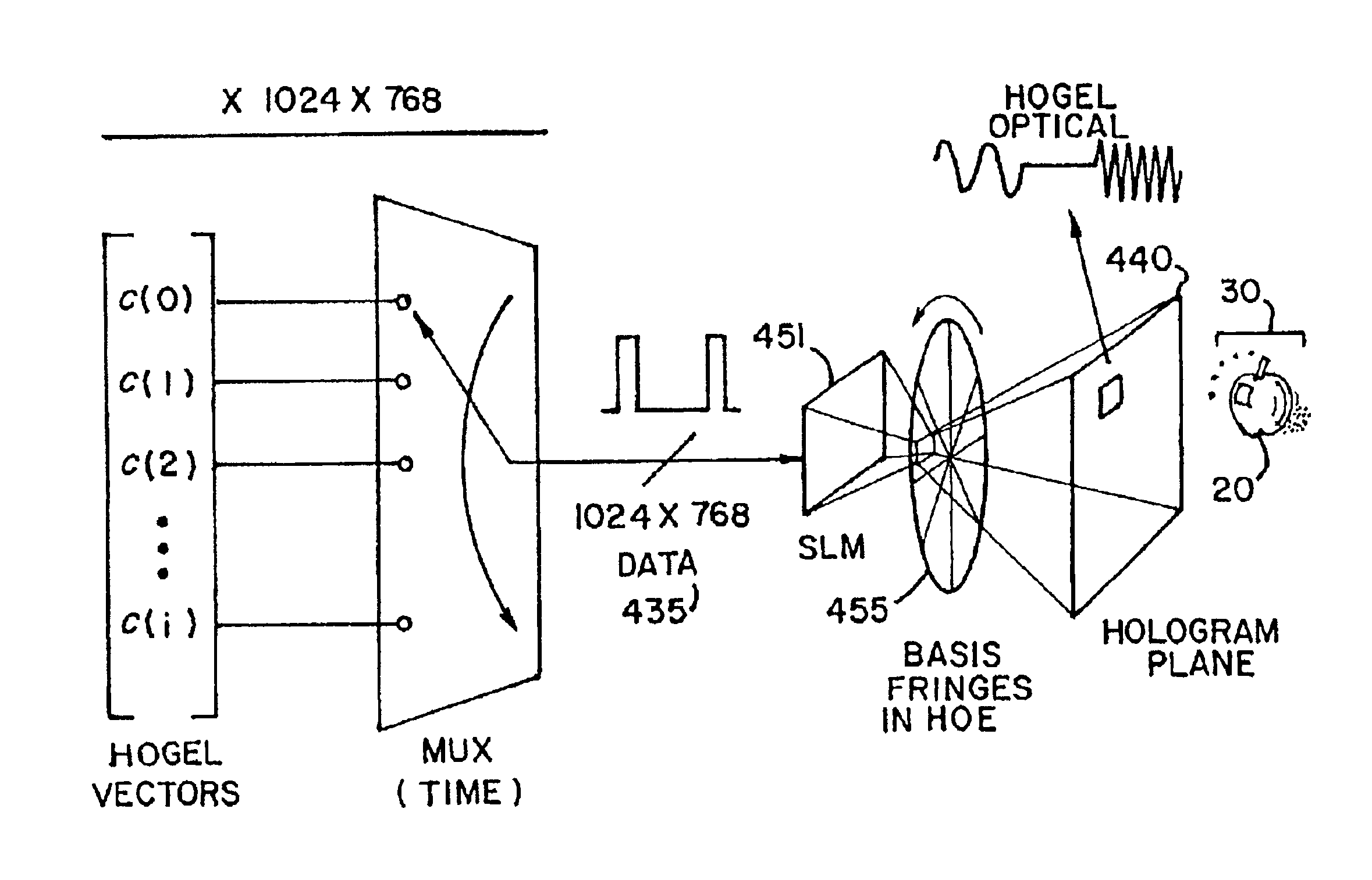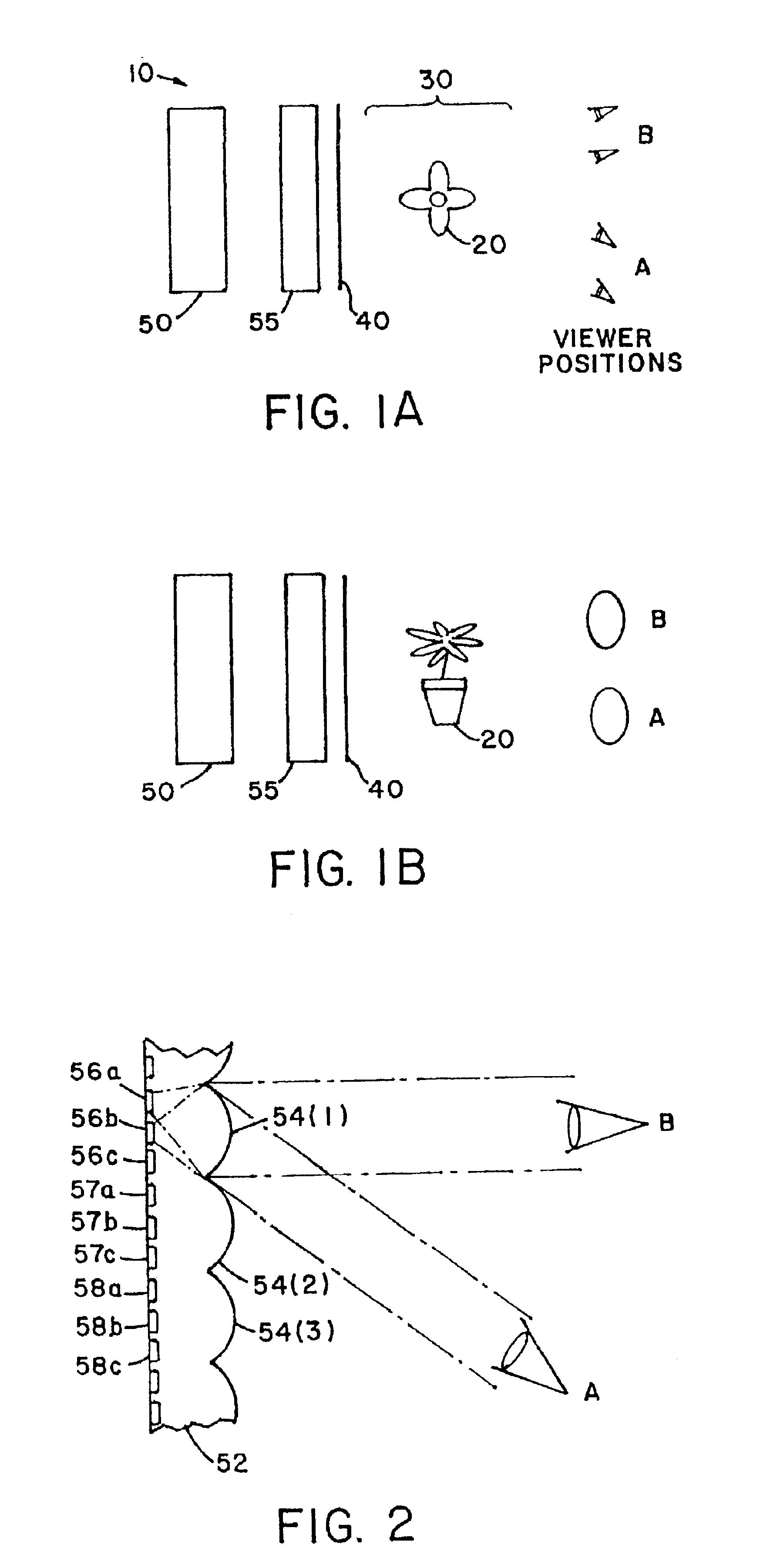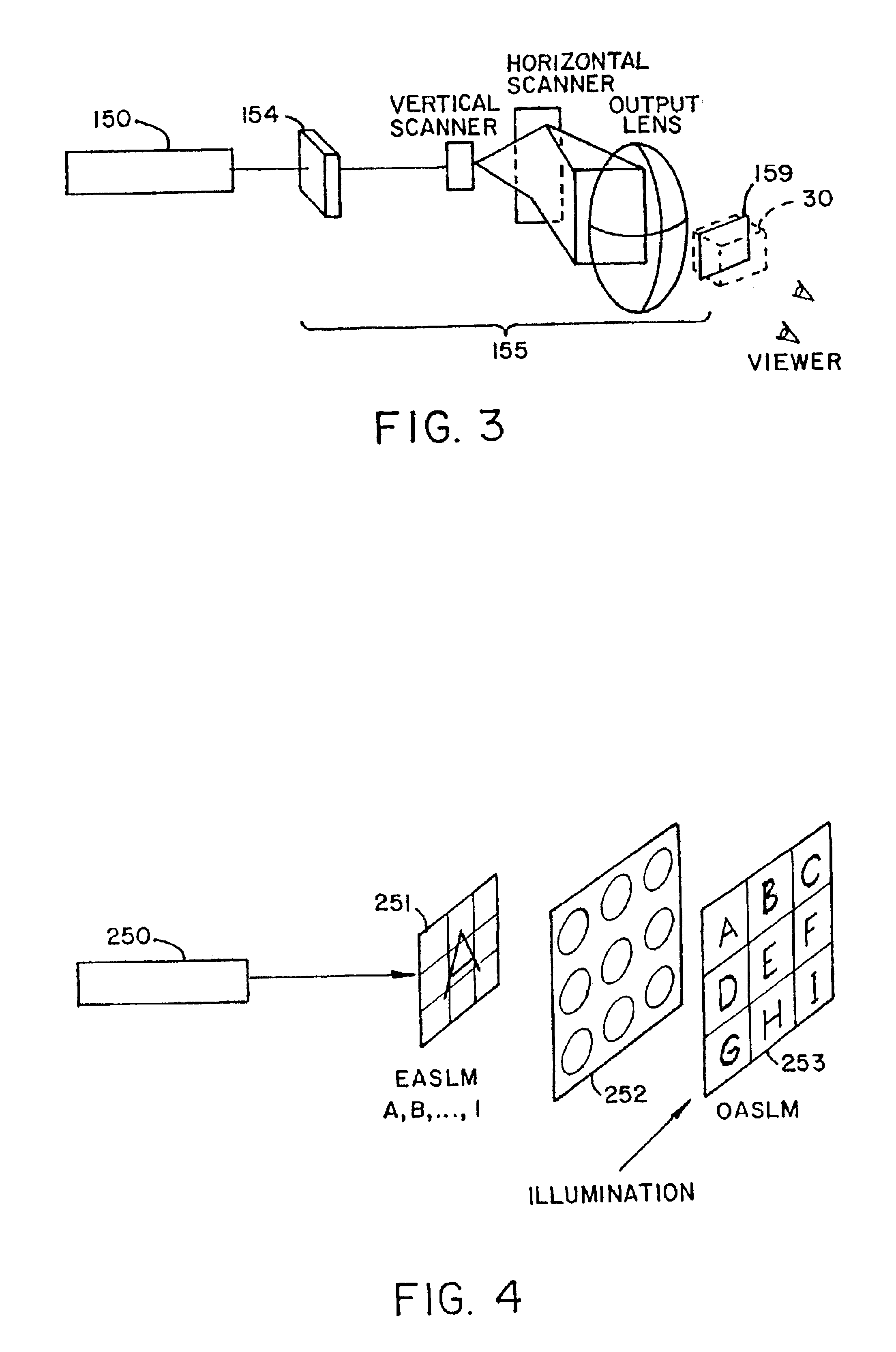Radiation conditioning system
a radiation conditioning and system technology, applied in the field of parallax display multi-view three-dimensional, can solve the problems of reducing image realism, problematic parallax display, and affecting the image quality of the image, so as to reduce the cost and complexity of fringe generation and greatly increase the system resolution
- Summary
- Abstract
- Description
- Claims
- Application Information
AI Technical Summary
Benefits of technology
Problems solved by technology
Method used
Image
Examples
Embodiment Construction
[0054]Holographic video requires the generation of arbitrary three-dimensional (3D) light fields. A 3D light field can be generated by decomposing the field computationally into components—such as an ensemble of beams with various trajectories and profiles—and projecting these components by a projector whose light is modulated by a multi-region light-shaping element with time-varying properties.
[0055]In FIG. 11, a 3D image 20 is generated in image volume 30 when the appropriate set of rays exit hologram plane 440. A diffractive optical element (DOE) 455, physically encoded with a diffraction pattern whose frequency is a sinusoidal function of angle, scans a time series of 2D bitmaps that exit a radiation projector 451 such as a spatial light modulator (SLM), an LED array or other device capable of projecting zero-, one-, two- or three-dimensional radiation. The SLM is controlled by a 3D data stream or control signal 435. The data stream 435 comprises a time division multiplexed set ...
PUM
 Login to View More
Login to View More Abstract
Description
Claims
Application Information
 Login to View More
Login to View More - R&D
- Intellectual Property
- Life Sciences
- Materials
- Tech Scout
- Unparalleled Data Quality
- Higher Quality Content
- 60% Fewer Hallucinations
Browse by: Latest US Patents, China's latest patents, Technical Efficacy Thesaurus, Application Domain, Technology Topic, Popular Technical Reports.
© 2025 PatSnap. All rights reserved.Legal|Privacy policy|Modern Slavery Act Transparency Statement|Sitemap|About US| Contact US: help@patsnap.com



